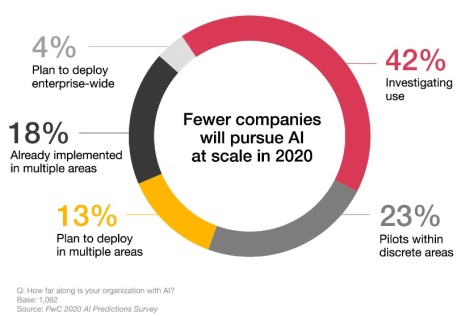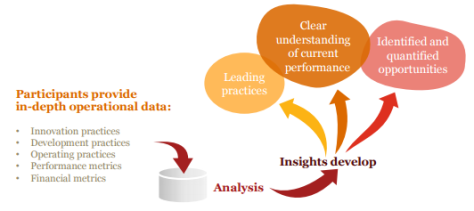Industrial leaders are digitising essential functions within their internal vertical operations processes, as well as with their horizontal partners along the value chain. In addition, they are enhancing their product portfolio with digital functionalities and introducing innovative, data-based services.
PwC has surveyed 2,000+ companies expecting to dramatically increase their overall level of digitisation. While just 33% rate their company as advanced today, that number jumps to over 70% looking ahead to 2020. While terms like the industrial internet or digital factory are also used to describe these changes, in this report PwC uses Industry 4.0 as a shorthand to describe a journey industrial companies are taking towards a complete value chain transformation.
Results show that Industry 4.0 digitises and integrates processes vertically across the entire organisation, from product development and purchasing, through manufacturing, logistics and service. All data about operations processes, process efficiency and quality management, as well as operations planning are available real-time, supported by augmented reality and optimised in an integrated network. Horizontal integration stretches beyond the internal operations from suppliers to customers and all key value chain partners. It includes technologies from track and trace devices to real-time integrated planning with execution.
Leading industrial companies also expand their offering by providing disruptive digital solutions such as complete, data-driven services and integrated platform solutions. Disruptive digital business models are often focused on generating additional digital revenues and optimising customer interaction and access. Digital products and services frequently look to serve customers with complete solutions in a distinct digital ecosystem.
PwC’s 2016 Global Industry 4.0 Survey of industrial companies is the biggest survey of its kind studying Industry 4.0 to date. With over 2,000 participants from companies in nine major industrial sectors and 26 countries, it goes to the heart of company thinking on the progress towards transforming into a digital enterprise.








